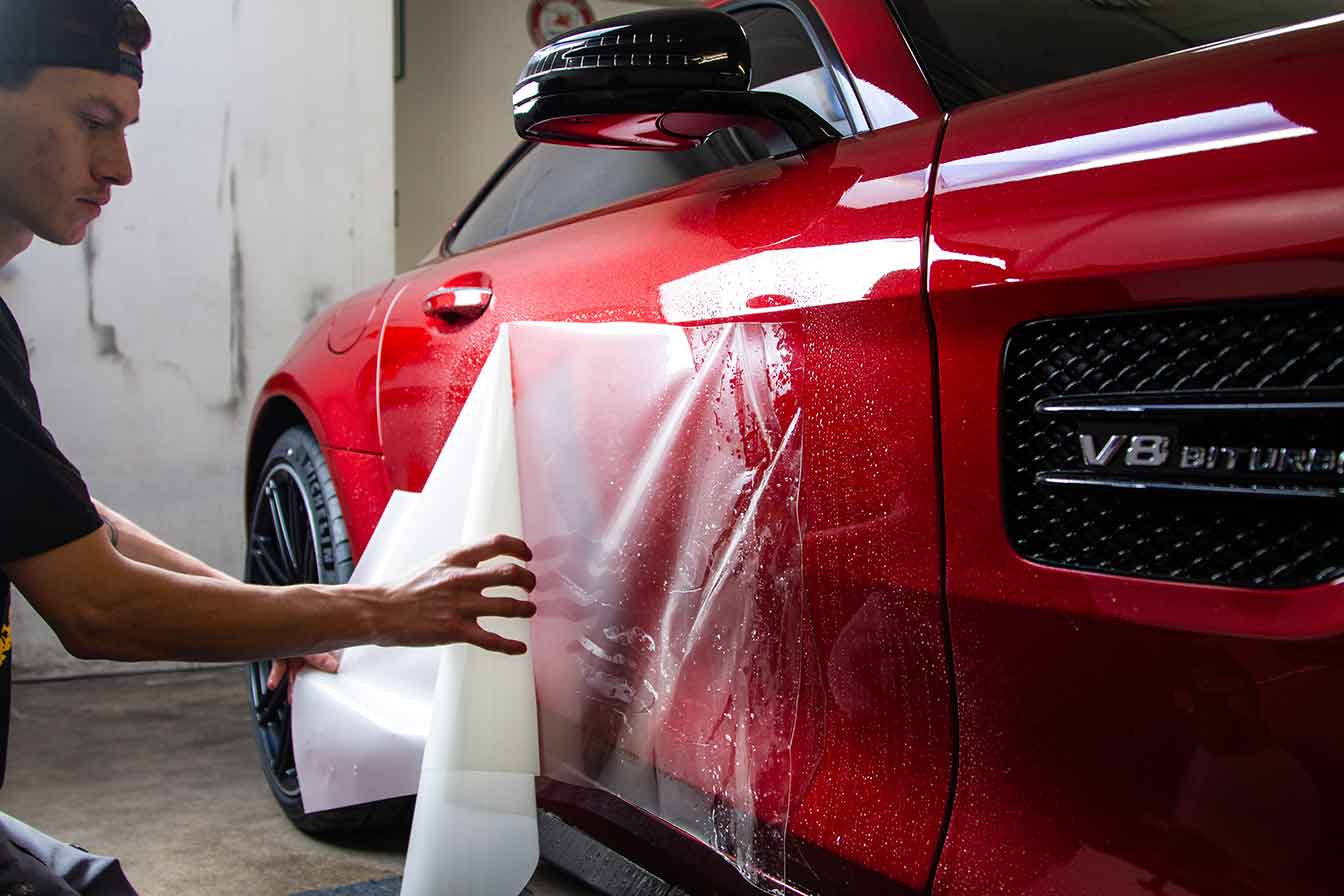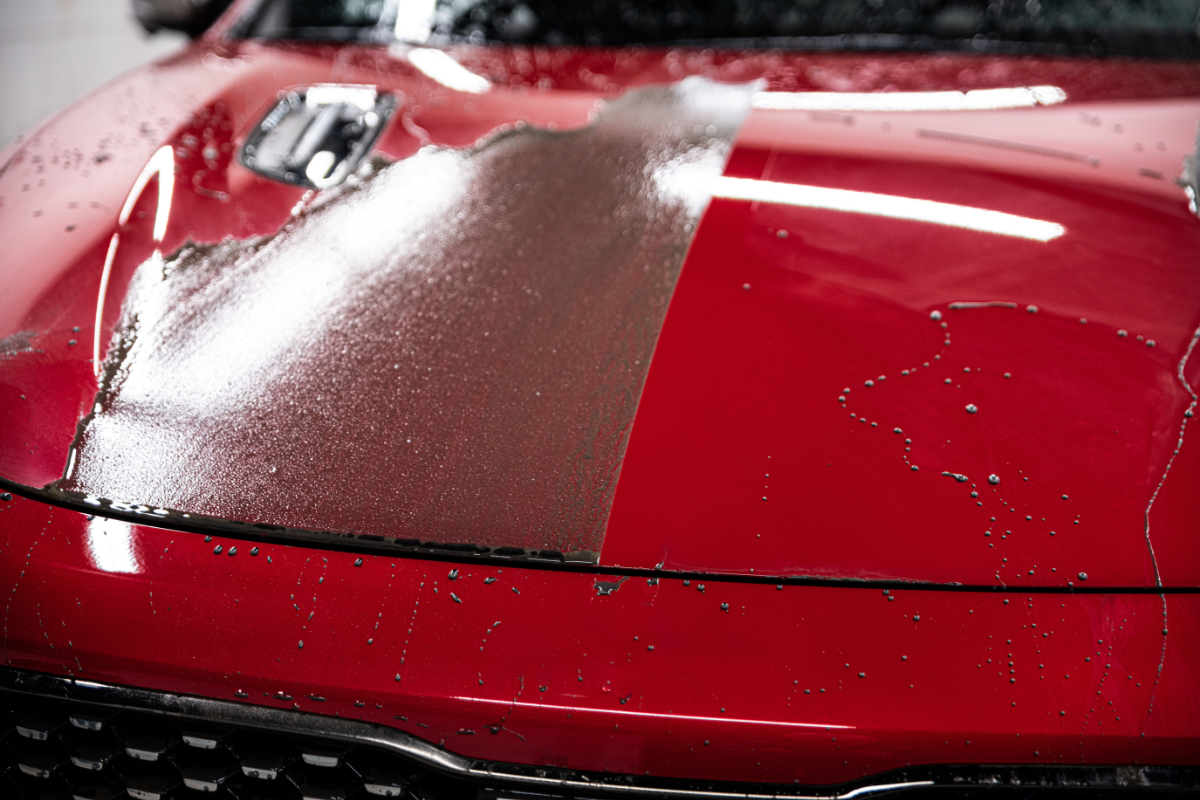The Function of Ceramic Coating in Enhancing Your Auto's Resale Value
The Function of Ceramic Coating in Enhancing Your Auto's Resale Value
Blog Article
The Importance of Ceramic Coating: Shielding Your Cars and truck's Outside With Precision
In an age where maintaining the aesthetic and practical integrity of your car is critical, ceramic coating becomes an essential service. This safety layer not only defend against ecological misfortunes yet additionally raises the visual appeal of your automobile. With its special bonding properties, ceramic coating offers a level of security that far goes beyond traditional waxing methods. Yet, how precisely does it attain such exceptional results? As we discover the subtleties of its application and contrast it to other options, one can not question but assist concerning the specifics that make this modern technology vital for contemporary car care.
Advantages of Ceramic Coating
When it comes to preserving a vehicle's aesthetic charm, ceramic finish offers considerable benefits. By forming a semi-permanent bond with the automobile's paint, ceramic layers properly prevent oxidation and fading, making sure that the car preserves a shiny, showroom-like surface for a prolonged duration.
In addition to its safety top qualities, ceramic covering supplies amazing hydrophobic residential properties, causing water and various other liquids to bead off effortlessly. This feature simplifies the cleaning procedure, as dust and particles are less most likely to adhere to the surface area, reducing the frequency and initiative needed for maintenance. The layer's resistance to chemical discolorations from acidic impurities like bird droppings and tree sap is one more notable benefit, minimizing possible paint damage.
Ceramic finishes additionally improve scratch resistance, providing a layer that can soak up small abrasions and swirl marks. This feature is particularly helpful in keeping an excellent surface area, reducing the chance of visible flaws and protecting the integrity of the car's paintwork gradually.

Just How Ceramic Finishing Works
Comprehending the technicians behind ceramic finish discloses its effectiveness as a safety option for lorries. Ceramic layers are essentially liquid polymer applications that chemically bond with a cars and truck's manufacturing facility paint, producing a protective layer.
Application of ceramic coating entails a meticulous process. The lorry's surface area need to be completely cleaned up and sanitized to ensure optimal adhesion. When applied, the liquid polymer develops a semi-permanent bond with the paint, hardening into a transparent, sturdy guard. This guard improves the car's gloss and hydrophobic residential or commercial properties, promoting simpler cleaning by causing water and pollutants to grain and slide off easily.
Moreover, the finish's molecular framework offers resistance to small scrapes and chemical spots. Unlike waxes or sealants that rest on top of the paint, ceramic coatings integrate with the surface, offering durable defense. This assimilation is essential to its performance, ensuring the lorry's coating continues to be excellent for several years.
Contrasting Ceramic Coating to Alternatives
In the realm of automobile security, ceramic coating stands as a formidable alternative when compared to typical alternatives such as waxes and sealants. While waxes use a temporary shiny finish, usually lasting just a few weeks to months, ceramic layers provide a longer-lasting remedy, frequently withstanding for several years. This durability is credited to the chemical bonding that takes place when ceramic coatings are applied, creating a strong layer that is resistant to ecological threats.
Contrastingly, sealers, although even more resilient than waxes, still disappoint the durable defense offered by ceramic coverings. Sealants can usually last for as much as a year, giving an check that artificial guard versus certain elements. They lack the superior hydrophobic properties and UV defense that ceramic coverings provide.
Additionally, ceramic coatings provide boosted scrape resistance, which neither waxes neither sealants can successfully match (ceramic coating). This is particularly valuable in maintaining a vehicle's excellent look. In addition, ceramic coatings simplify upkeep initiatives by decreasing the adherence of dirt and gunk, consequently promoting much easier cleansing. In summary, while typical waxes and sealants offer standard security, ceramic finishings present a comprehensive, lasting solution that substantially improves and maintains the car's outside coating.
Application Process Described
Applying ceramic layer to a lorry requires a careful process to make sure optimum results and toughness. When cleansed, the car is dried out and brightened to get rid of any type of imperfections, as any existing swirls or scratches can come to be more noticable after the finish is used.
Adhering to surface area prep work, the application of the ceramic layer begins. The finish is typically used in a climate-controlled setting to stop dirt bits from clearing up on the newly cleaned up surface. Using an applicator pad, the ceramic coating is applied in small sections to ensure even protection. It is important to follow the supplier's guidelines regarding the ideal curing time and application density.
After application, the finishing needs a certain curing period, throughout which the lorry ought to be safeguarded from water and impurities. This treating process can differ depending on the item but typically varies from 24 to 48 hours. Ultimately, this thorough process is critical in achieving a shiny and resistant surface.
Upkeep Tips for Long Life
To keep the long life of a ceramic covering, adherence to a disciplined upkeep regimen is necessary. Normal cleaning is critical; utilize a pH-neutral vehicle hair shampoo hop over to here and soft microfiber gloves to prevent abrasions. Prevent automated automobile cleans, as their harsh brushes can jeopardize the finishing's honesty. Instead, choose a hand laundry to check over here make certain thorough yet mild cleaning.
Post-wash, drying out the vehicle with a clean microfiber towel protects against water areas that might break down the coating in time. In addition, apply a ceramic covering booster every couple of months. These boosters reinforce the hydrophobic properties and enhance the finishing's safety capabilities, ensuring it stays reliable against impurities.
Bear in mind that vehicle parking places play a critical duty in upkeep. ceramic coating. Whenever possible, park in shaded locations to reduce UV direct exposure, which can progressively damage the finish. For lasting storage space, consider making use of a vehicle cover for added security versus environmental aspects
Final Thought
In final thought, ceramic finishing serves as a critical safety layer for automobile exteriors, using durable protection against environmental aspects such as crud, uv, and dirt rays. Comprehending the application procedure and sticking to maintenance recommendations are important for maximizing the longevity and efficiency of ceramic coating.
When it comes to protecting a cars and truck's visual charm, ceramic covering supplies significant advantages. By creating a semi-permanent bond with the car's paint, ceramic coatings effectively avoid oxidation and fading, making certain that the automobile maintains a glossy, showroom-like surface for a prolonged duration. Ceramic coatings are essentially fluid polymer applications that chemically bond with a cars and truck's factory paint, developing a protective layer. In recap, while traditional waxes and sealers provide basic security, ceramic coatings offer a detailed, lasting option that considerably boosts and maintains the car's exterior surface.

Report this page